-
Car Reviews
- All reviews
- Midsize SUVs
- Small cars
- Utes
- Small SUVs
- Large SUVs
- Large cars
- Sports SUVs
- Sports cars
- Vans
Latest reviews
- Car News
-
Car Comparisons
Latest comparisons
- Chasing Deals
The Hyundai Nexo demonstrates the clear potential of hydrogen fuel cell electric vehicles as suitable for Australian conditions. But until there is infrastructure to support refuelling the cars, that potential will remain limited.
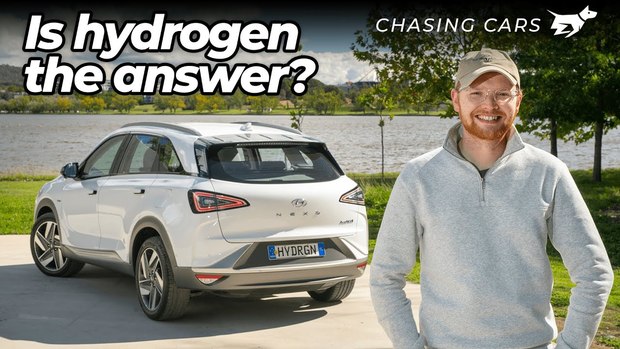
With various Australian governments leaning into the prospect of industrial-scale hydrogen capture and export, debate about whether the energy source should fuel our cars has ratcheted up a notch.
Hyundai have spent two decades exploring hydrogen fuel cell technology for vehicles, while Japanese rival Toyota has done much the same. This month, the two global brands launch fuel cell electric vehicles in Australia within days of one another.
While the design of Toyota’s imminenthly arriving second-generation Mirai has been feted in the last year for its slinky, rear-drive proportions, it’s the 2021 Hyundai Nexo that is more consequential in Australia for now.
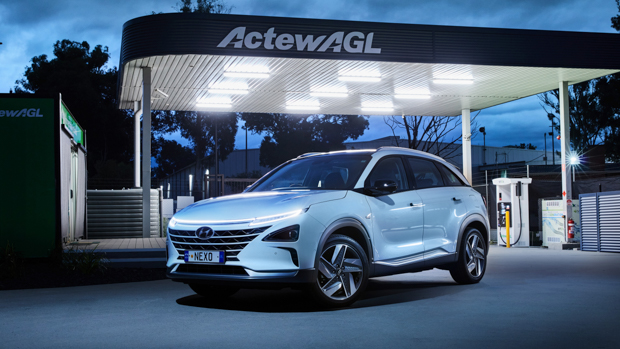
That’s the case because the Hyundai Nexo has quite a few customers already. You can’t buy one privately – at least not yet, as refuelling opportunities are presently scarce. But government and fleet buyers have been able to submit expressions of interest for some time.
One of the earliest to do so was the Canberra-seated Government of the Australian Capital Territory (ACT), who ordered a fleet of twenty Nexo FCEVs and worked with Territory energy provider ActewAGL to construct an appropriate refuelling station for the city.
Last week Chasing Cars was on site to drive the Nexo, a Hyundai Tucson-sized medium SUV, and refuel the crossover at the Fyshwick hydrogen station – a facility slated to become Australia’s first publicly-accessible hydrogen refueller, in the coming months.
The way the Nexo drives is a pleasant combination of traits taken from electric vehicles and combustion cars. Progress is basically silent and the electric powertrain on board is torquey and muscular – but the Nexo doesn’t use jarring regenerative braking. That’s because there is no substantial battery to recharge on the move.
‘Traditional’ EVs like the Tesla Model 3 – or Hyundai’s own Kona Electric – receive electricity directly from the grid into very large batteries, meaning long recharge times even for the fastest-charging electric cars on the market.
Hydrogen fuel cell EVs, on the other hand, generate electric power on-board. They are fuelled with pre-compressed hydrogen, which then feeds an on-board fuel cell stack that generates electric power for the motor.
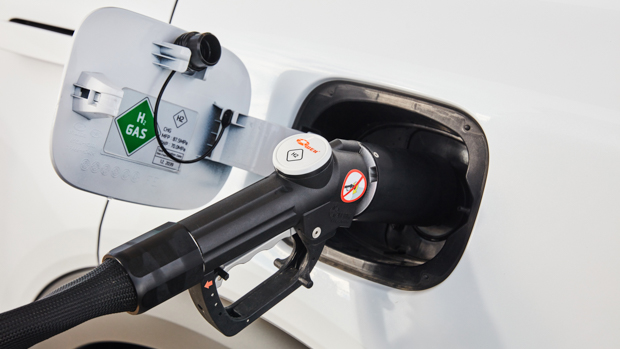
This is certainly a more complicated energy generation process than that employed by a battery EV, but hydrogen fuel cell EVs have two massive advantages over their traditional electric counterparts.
The first is that refuelling times are similar to petrol and diesel cars. The Nexo can accept 6.33kg of hydrogen, which provides a WLTP estimated driving range of 666km. Refuelling the Nexo from zero to full takes just five minutes.
Even the fastest-charging EV, like Hyundai’s forthcoming Ioniq 5, takes around 25 minutes to do the same job, and with considerably less range: 480km, in the case of the new Ioniq SUV.
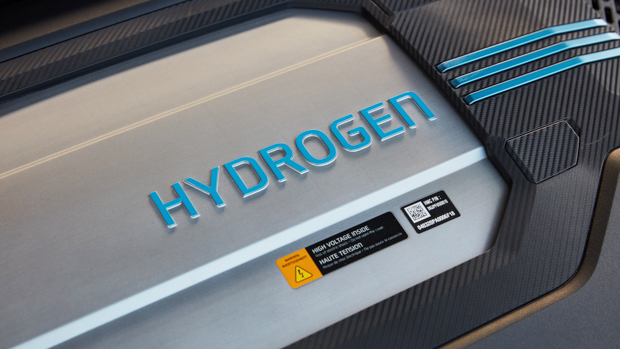
The second advantage is that hydrogen is very light. Its combustible nature means that the tanks that hold it are thick and heavy, but even with this extra ballast, the Nexo is a few hundred kilos lighter than an equivalent battery EV.
Essentially, this makes the Nexo more agile and more like a traditional car to drive. It changes direction with less inertia and less understeer than most of its EV counterparts.
But there are problems with the setup, too. The first is entirely solvable – infrastructure. Canberra’s refueller might be slated to become publicly-accessible, but it isn’t, yet: the ACT Government needs to work out how much hydrogen it needs to reserve for itself to refuel the fleet of 20 Nexos, and that means a few months of experimentation.
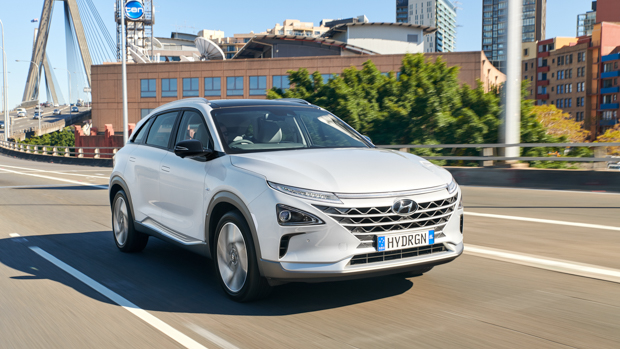
The hydrogen being supplied by the Canberra refueller doesn’t have a known price yet, either, though senior Hyundai executives mooted a price of $15 per kilogram – pricing a full, 666km ‘tank’ at just under $100: a little higher than diesel, in other words.
Hyundai has a private refueller in Sydney, and Toyota one in Melbourne. A refueller is being constructed in Brisbane, though this may be for the exclusive use of the Queensland government. Other refueller projects are found elsewhere in Australia. But there is no clear, coordinated strategy to take this technology public.
Certainly, you can see how Australia’s petrol and diesel distributors would find the concept of distributing hydrogen on today’s service station forecourts desirable. Hydrogen can be produced in bulk in more remote locations and transported into city centres, much like today’s liquid fuels. The ecosystem is a natural one.
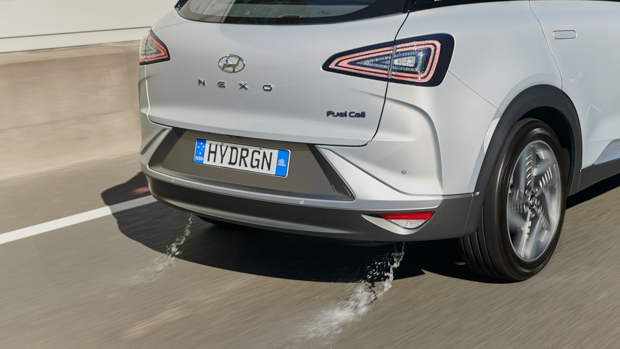
But whether such an idea would get off the ground before battery EV charging stations become more commonplace is anybody’s guess at present. It is likely that the two technologies will compete for attention and primacy in Australia – a large country uniquely plagued by the problem of long driving distances and the expectation of rapid refuelling or recharging.
As for the Nexo itself: it’s really quite a pleasant midsize SUV to drive. With five seats inside and sized like a Tucson, at 4.67m in length and 1.86m in width, and weighing in at about 1,800kg, everything here feels quite familiar.
While it is deliberately styled to look slightly futuristic, driving the Nexo reveals it to be more or less free of any learning curve. While it takes off and cruises like an electric vehicle, with no combustion engine noise and plentiful, instant torque, many of its other responses are very similar to today’s petrol and diesel cars.
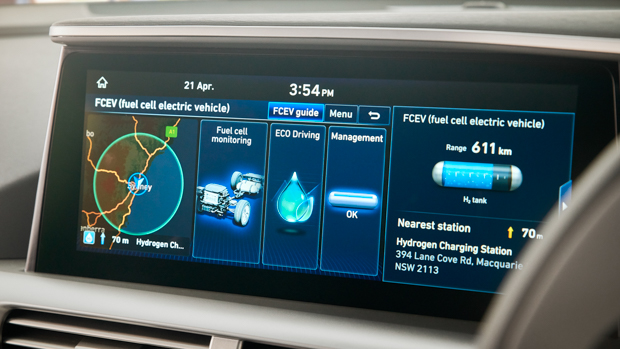
Namely braking: because the Nexo only has a tiny battery to act as a go-between for the fuel cell stack and electric motor, there is no real point to regenerative braking in this SUV. So, when you lift the throttle, the Nexo coasts, so you can drive this vehicle with both pedals, rather than the one-pedal drive common to EVs. It’s worth noting you can request the Nexo to use regen if you prefer, but it’s not especially strong.
The Nexo’s handling is best described as safe, and adequate. At 1,800kg, it’s still no lightweight, even if it is handily lighter than an equivalent battery EV. But it turns into corners well and grips up nicely on faster rural roads – which the ACT has plenty of. Secure roadholding is a strength here, complemented by Hyundai’s extensive local ride and handling tuning.
It rides quite well, too, particularly at higher speeds – here, the chassis seems to get into a rhythm with all the controls feeling in sync. At lower speeds there is some intrusion from the suspension over repeated bumps or corrugations, but it isn’t unsettling or crashy.
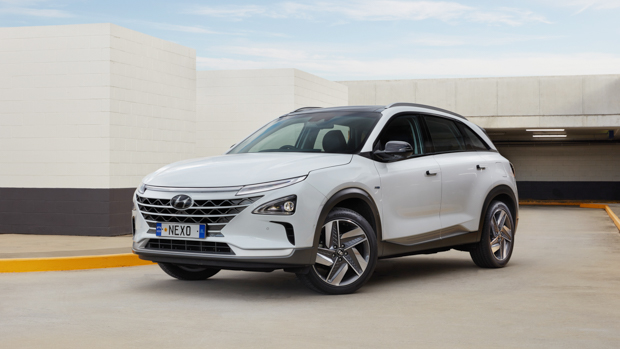
This isn’t a performance SUV and nor does the Nexo feel like one. The electric motor’s outputs are fairly modest: 120kW of power is about the same as a base Tucson, though the 395Nm of torque is more on par with a four-cylinder turbo diesel engine.
Unlike a diesel, though, that torque is delivered as soon as you prod the Nexo’s throttle, and this SUV makes a safe partner for overtaking on the highway or a country road, taking off quickly if not rapidly.
Safe and secure also describes the semi-autonomous safety systems of the Nexo, which are quite up to date. You get forward autonomous emergency braking, adaptive cruise control, strong lane centring, dual blind spot camera monitoring, and rear cross-traffic alert with AEB intervention. Plus, there’s a solid 360-degree parking camera.
The Nexo debuted in 2018 – three years ago. On top of that, it’s taken a while to get the Nexo onto the road in Australia. The cars have actually been sitting at Hyundai’s headquarters in Sydney for many months while a global pandemic threw up roadblocks to the delivery of the twenty-strong fleet to the ACT Government.
A consequence of this delay is that the Nexo is half a generation behind newer Hyundai SUVs, like the facelifted Santa Fe, or the forthcoming Tucson. On the whole, the Nexo feels pretty up to date in the cabin, but elements of the design are dated already.
Those who hate the idea of climate controls being buried in a touchscreen will love the Nexo, though: there’s a button for everything in here. This was the first Hyundai product to introduce the brand’s ‘bridge type’ centre console, prominently sitting between the two front seats and offering express control of virtually every function of the car. Climate, gears, drive modes … you name it.
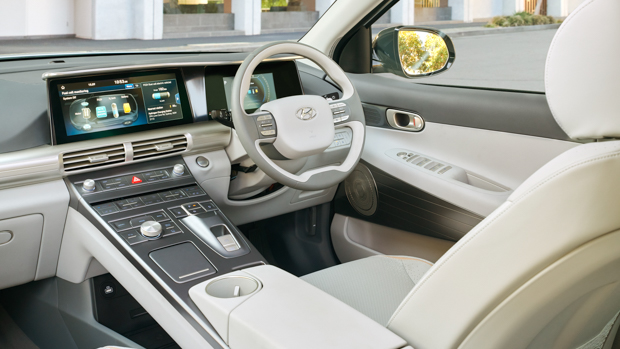
Once you remember where all the buttons are, the Nexo – like the Santa Fe and Palisade that have followed it in incorporating the bridge – becomes very easy to use.
There is a bright 12.3-inch touchscreen sitting above the centre console, incorporating wired Apple CarPlay and Android Auto, plus navigation, Bluetooth and digital radio – plus the usual AM and FM bands.
The driver also scores a digital display measuring a smaller seven inches. This is a more compact unit than in newer Hyundai vehicles – and while it still provides all the basic trip computer functions and a blind spot camera, it can’t display the trick dual cameras in one screen – instead, whichever indicator is in use displays a picture in the centre of the display.
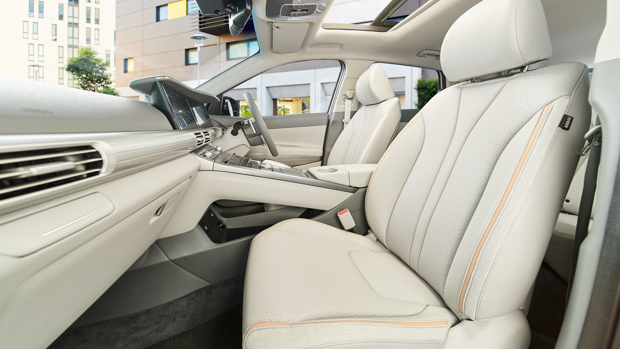
Hyundai Australia opted to fit the local-spec Nexo with every available option from the factory, and as a result, all the cars feel comprehensively equipped inside.
Two attractive colour screens customise many elements of trim inside, including the seats. There’s a very light grey scheme that feels bright and airy, and a more moody navy blue that is unexpectedly luxe.
Still, if the Nexo was on sale privately, it would cost north of $100,000, if United Kingdom private market pricing is anything to go by – which Hyundai Australian executives suggested it was.
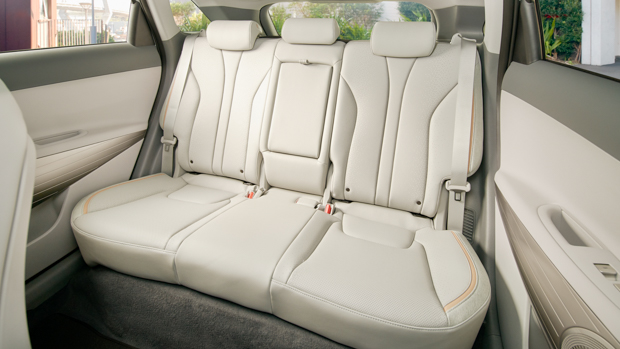
Both front seats are electrically-adjustable with memory, heating and cooling, and they sit beneath a dramatic fixed panoramic sunroof. Sound quality is also excellent, with speakers provided by specialist Krell Hi-fi.
Seat comfort seemed solid on our two-hour drive around the ACT and rural New South Wales, with good lumbar support providing the seats with a little more firmness than usual for a Hyundai, but in a good way.
Moving into the back reveals the Nexo to be entirely liveable as a five-passenger vehicle, even if the middle seat is a bit of a perch. The outboard seats – which are heated – are accommodating for six-footers in terms of both headroom and legroom.
Behind an electric tailgate you find the Nexo’s 461-litre boot, which is large and square in shape – meaning it’ll be easy to get suitcases or other forms of cargo into this car. However, underneath the boot floor there is no spare wheel – just a tyre repair kit.
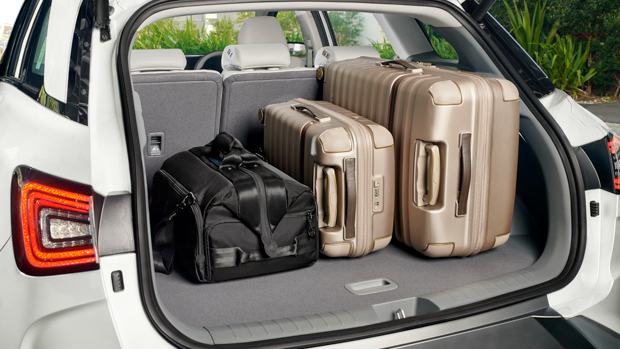
Like other Hyundai products, the Nexo is covered by a five year unlimited kilometre warranty.
Other running costs are difficult to report on at the current time.
The Nexo’s service costs are covered under individual fleet agreements made between operators and Hyundai Motor Company Australia (HMCA).
If the car was sold privately, it’s likely that information would become public.
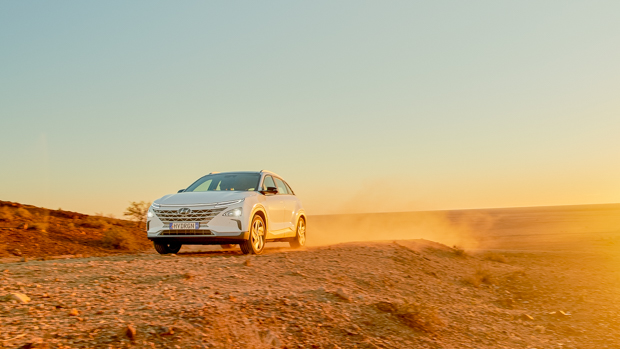
And as for refuelling: it all depends on where the price of hydrogen settles if, or when, the Canberra refueller becomes accessible to the public.
Hyundai estimated that the cost of a refuel would centre around $15/kg for hydrogen, which makes the Nexo comparable to a diesel Tucson or Santa Fe SUV for refuelling costs.
It is the federal government’s stated goal to reach a price of $2/kg for hydrogen in future years, but whether this comes to pass, we’ll have to wait and see.
If that did happen, it would make hydrogen vehicles both quick to refuel and cheap to refuel.
The Hyundai Nexo is less about being a competitive medium SUV and more about being a rolling test bed for hydrogen fuel cell technology in passenger vehicles.
That, in itself, is a technology that has been blasted in recent months by key industry figures like Elon Musk of Tesla, and Herbert Diess of Volkswagen.
However, as the Nexo itself proves, it is possible to create a midsize crossover that is quick to refuel and has zero tailpipe emissions – even if the hydrogen used to fuel the vehicle is not necessarily produced by way of renewable electricity. In the case of the ACT refueller, the hydrogen is, in fact, renewably produced.
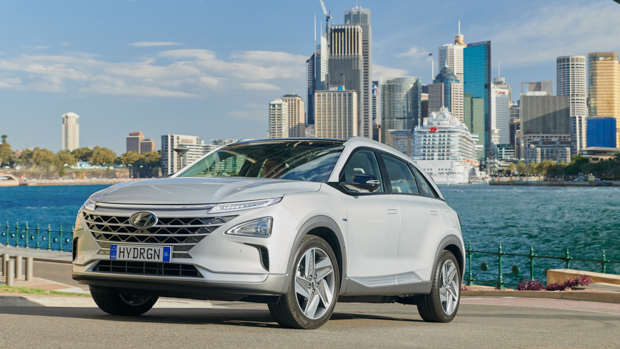
Hyundai make clear that the use case for hydrogen fuel cell technology is in larger vehicles designed to carry heavy loads. The company is already investing heavily in hydrogen trucks, buses, trains, and ships.
The big question is where the line between battery EV and hydrogen fuel cell EV will sit in the realm of cars, SUVs, and utes.
If it’s true that vehicles powered by diesel today will be hydrogen fuel cell EVs in the future, then it is likely Hyundai are already exploring the possibility of a Palisade-sized large SUV fuelled by hydrogen, as well as a Toyota HiLux rival ute powered by the gas.
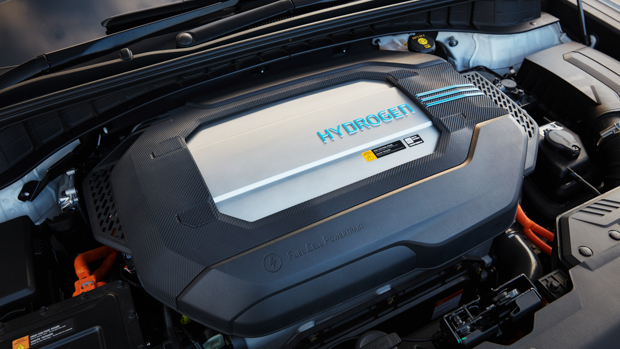
But with the Nexo sized like a Tucson, it’s probably the case that a vehicle of these dimensions would be a battery EV in future.
Still, it’s great this debate is happening, and that a real-life experiment – in the form of the Nexo and its fleet operators in the ACT – is now underway.
Key specs (as tested)
About Chasing cars
Chasing Cars reviews are 100% independent.
Because we are powered by Budget Direct Insurance, we don’t receive advertising or sales revenue from car manufacturers.
We’re truly independent – giving you Australia’s best car reviews.
The estimate provided does not take into account your personal circumstances but is intended to give a general indication of the cost of insurance, in order to obtain a complete quote, please visit www.budgetdirect.com.au. Estimate includes 15%^ online discount.
^Conditions Apply
Budget Direct Insurance arranged by Auto & General Services Pty Ltd ACN 003 617 909(AGS) AFSL 241 411, for and on behalf of the insurer, Auto & General Insurance Company Limited(ABN 42 111 586 353, AFSL 285 571).Because we don’t know your financial needs, we can’t advise you if this insurance will suit you. You should consider your needs and the Product Disclosure Statement before making a decision to buy insurance. Terms and conditions apply.
Indicative quote based on assumptions including postcode , 40 year old male with no offences, licence suspensions or claims in the last 5 years, a NCD Rating 1 and no younger drivers listed. White car, driven up to 10,000kms a year, unfinanced, with no modifications, factory options and/or non-standard accessories, private use only and garaged at night.
^Online Discounts Terms & Conditions
1. Discounts apply to the premium paid for a new Budget Direct Gold Comprehensive Car Insurance, Third Party Property Only or Third Party Property, Fire & Theft Insurance policy initiated online on or after 29 March 2017. Discounts do not apply to optional Roadside Assistance.
2. Discounts do not apply to any renewal offer of insurance.
3. Discounts only apply to the insurance portion of the premium. Discounts are applied before government charges, taxes, levies and fees, including instalment processing fees (as applicable). The full extent of discounts may therefore be impacted.
4. We reserve the right to change the offer without notice.